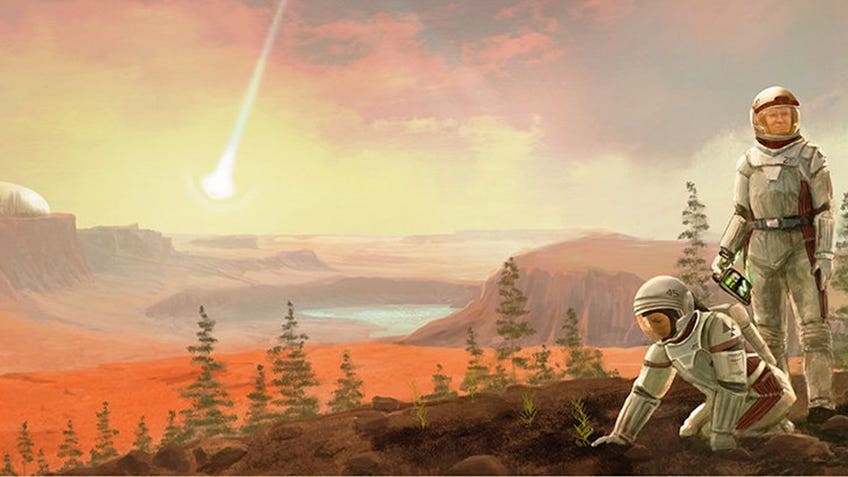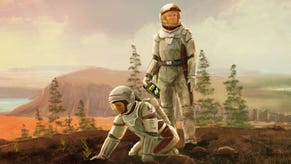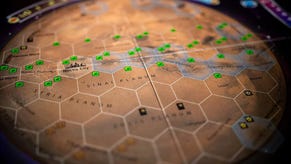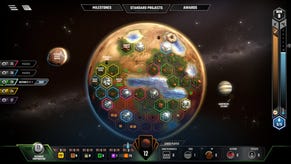Could playing Terraforming Mars help us settle the Red Planet for real? We asked a space expert
Dice on Mars?
Carl Sagan, in his 1983 book Cosmos, noted that “Mars has become a kind of mythic arena onto which we have projected our Earthly hopes and fears”. For the ancients, these were manifested in the Red Planet as warlike deities or portents of grief. For early science-fiction writers, they took the form of little green men or alien civilisations long gone. For us, those hopes are now focused on being able to journey to the distant world and one day make it our home. That isn't going to be easy. The surface of Mars is a chilly -26 degrees Celsius, while the lack of atmosphere renders any prolonged stay there tricky at best.
What if there was a board game that helped us to understand the enormous challenge involved in colonising the Red Planet? I recently sat down with executive director of the Mars Society, Lucinda Offer, to play Terraforming Mars. As the head of an organisation dedicated to the exploration and settlement of the planet, Offer is the perfect person to say if the game offers us a real-life blueprint to making new worlds our own.

Terraforming Mars, by designer Jacob Fryxelius, sees players act as a corporation trying to make Mars habitable. Each corp has its own specialism that players must leverage over the course of numerous generations to raise the planet's oxygen and temperature while also creating oceans, forests and cities to support life. Earning terraforming points along the way, they do this in true Eurogame style: through careful management of a tableau of cards that they buy and play using resources gained on their individual player boards. When the planetary conditions are just right and the last ocean tile has been placed, the player with the greatest terraforming rating wins the game.
The game is not all about finding life on Mars - it's about taking it there.
Offer has space running through her veins. Born on the very first Earth Day, 50 years ago, Offer has done the maths and believes that she was conceived on the week of the Apollo landings. "You could say that space has been a big part of my life from the very beginning," she chuckles. Not only has she been executive director of the Mars Society for the last ten years, she grew up near NASA’s Ames Research Center in California. "My father worked for NASA," Offer says. "I was always on campus. I even did judo classes there."
As we sit down to play Terraforming Mars, it's clear there's a lot here for Offer to get stuck into. Throughout, she shares cards from her hand, enthusiastically explaining how they relate to Mars. When she’s dealt Colonizer Training Camp, she recalls her own time locked in a Mars desert research station, testing a new rover for NASA. "It's basically a two-storey tin can,” she says. "The idea is that it will fit on a rocket and be home for up to six crew members living on Mars."
The thought of being able to see trees grow there was just lovely, wonderful and beautiful.
Offer is most taken by the idea of placing forest tiles. For her, the romance of trees on Mars is not lost: "The thought of being able to see them grow there was just lovely, wonderful and beautiful." Transplanting fauna and flora from our own world is another aspect she is especially intrigued by. "What I liked,” she says, "is that the game is not all about finding life on Mars - it's about taking it there."

While Offer admits to being a bit competitive while playing, it is this aspect of the board game that she hopes doesn't find its way into the real mission to Mars. "There was one card which brought down an asteroid,” she comments. "While this raised the temperature, it meant another player lost resources that would help them grow trees.
"We should all be working together to grow as much life as possible, not destroying in one place to get ahead in another."

As we wrap up the game after a night of terraforming, it's obvious that Offer has really enjoyed it - but would she recommend it to someone who wanted to find out more about the realities of terraforming? "I would,” she enthuses. "The game really expressed well the difficulty of it all, as this big endeavour is not going to be a simple task." She adds that she would make one change: "When I play the game with the Mars Society, I will say that we have to work together as much as possible."
We should all be working together to grow as much life as possible, not destroying in one place to get ahead in another.
Terraforming Mars is a rich game that presents us with a vision of what is needed to make the Red Planet our new home. While it demonstrates well the processes of terraforming, it does lack a sense of some of the higher ideals of mutual cooperation that we'll need to adopt to ultimately make it a success. It will be difficult to set aside our competitive nature, but there's no reason why we can't work together to take the best version of ourselves to a new world.










